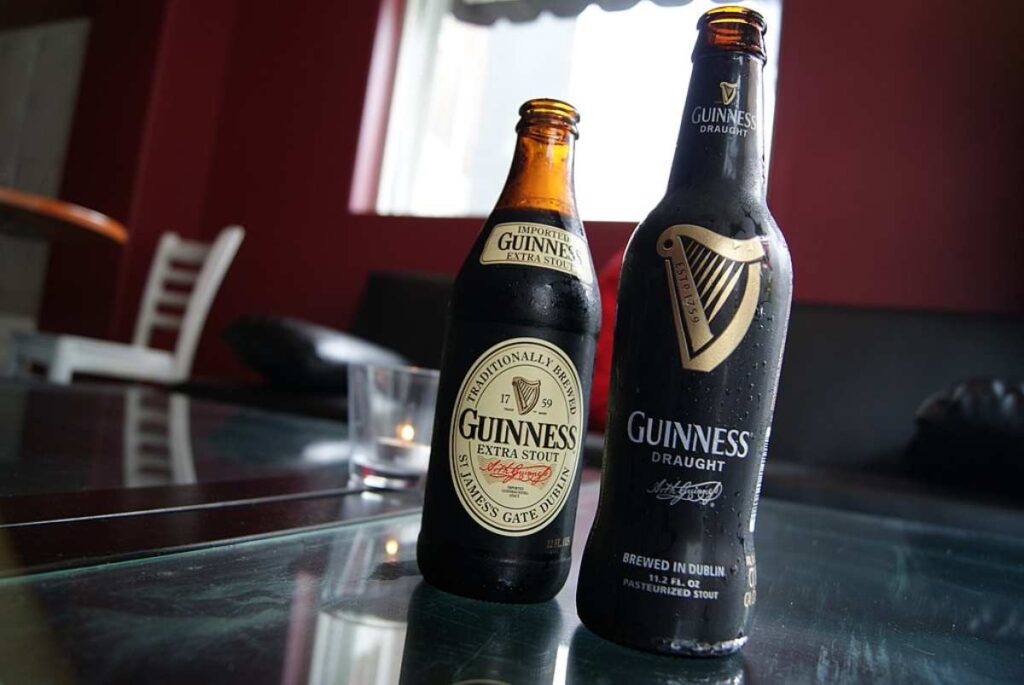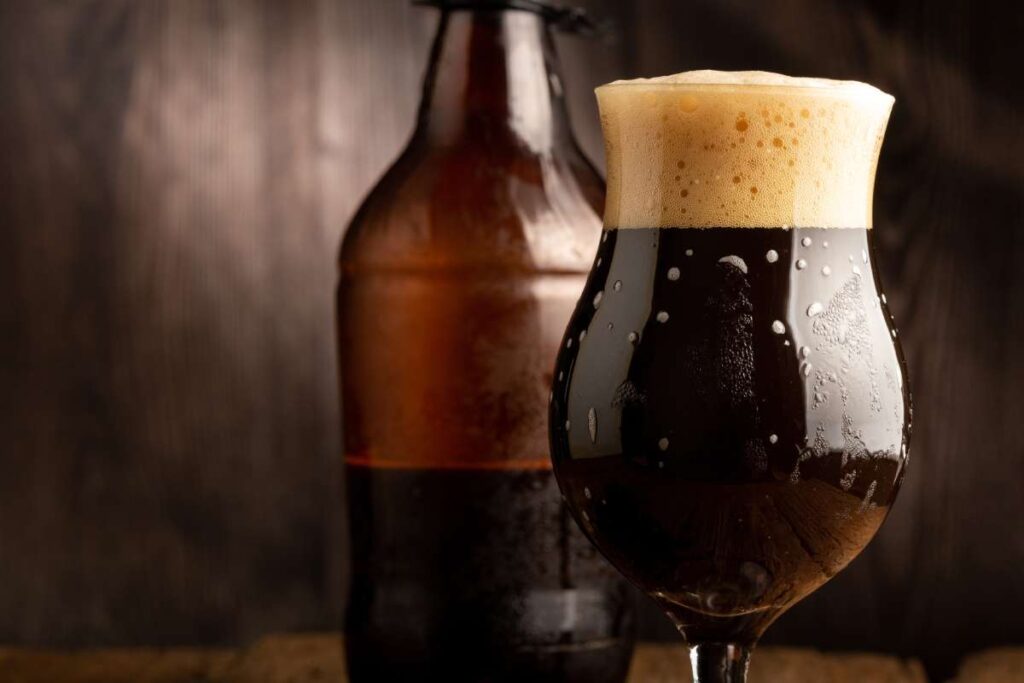What is Porter? In this article, you will learn interesting facts about Porter.
Porter beer is a fascinating style of dark beer with origins that can be traced back to England in the 1700s. Known for its deep ruby brown to black color and rich flavors derived from dark malts, porters evoke a sense of history and tradition. With a flavor profile that can range from light and sweet to dark and roasty, this popular beer style has evolved and expanded over the centuries, making it an intriguing subject for beer enthusiasts.
According to a letter by César de Saussure, the name “porter” was likely derived from the manual laborers who preferred this beer. Since its inception in London, porters have continued to captivate drinkers due to their well-balanced, hearty characteristics. Top-fermenting ale yeast is typically used in the brewing process, adding to the unique qualities that set porters apart from other beer styles.
As we delve into the world of porter beer, you will discover interesting details about its origin, brewing techniques, and development over time. With a storied past and vast range of flavors, porters offer a fascinating glimpse into the ever-evolving landscape of the beer industry.
Table of Contents
History and Origin of Porter Beer
Porter is a style of beer that originated in London, England during the early 18th century. It was well-hopped and dark in appearance, owing to the use of brown malt. The name “porter” is believed to have been derived from its popularity among porters and manual laborers who preferred this type of beer during that time period ^.
In the 1720s, the first mention of porter in print was noted, with the Swiss-born César de Saussure attributing the beer’s name to the occupations of those who enjoyed it ^. London’s first porter brewers made their beers with brown malt produced in the town of Ware, which was the largest malting town in the country at the time. The malt was shipped from Ware to London via the River Lea and the Thames ^.
Ralph Harwood, an English brewer, was instrumental in the development of the porter style. He introduced a new brewing process that combined three threads of different ales to create a single beer. This innovative method saved time and money for brewers and ultimately led to the widespread adoption of porter beer in London and beyond.
During its peak in the 19th century, porter’s popularity began to wane as pale ales and pilsners emerged as the favored beer styles across Europe. Brown ales, milds, and stouts started to gain attention among those who still desired a dark beer, but these styles were generally stronger in flavor and alcohol content ^.
Despite its decline in popularity during certain periods, porter beer remains an important part of brewing history. Today, it continues to be cherished by beer enthusiasts looking for a rich, dark ale with chocolate and caramel flavors, as well as hints of coffee and toffee ^.
Ingredients and Brewing Process
Porter is a style of dark beer that originated in England in the early 18th century. It is well-known for its full-bodied, rich, and complex flavor profile, which often features notes of caramel, chocolate, and roasted malt. In this section, we will explore the ingredients used in brewing porter and the process by which it is made.
Key ingredients in brewing porter include malt, hops, water, and yeast. Various types of malt contribute to the distinctive characteristics of porter, such as brown malt, chocolate malt, and black malt. Brown malt gives the beer its dark color and roasted flavor, while chocolate malt and black malt enhance the depth and complexity of the taste. Additionally, the use of roasted barley can contribute to the signature roast and caramel flavors. Stouts, a close relative of porter, also use roasted barley, but in a greater proportion.
Brewers usually opt for top-fermenting ale yeast to produce porter, except for Baltic porter, which relies on bottom-fermenting lager yeast. Hops play a vital role in balancing the flavors, lending their earthy, resinous, and floral notes to the beer.
When creating porter, the brewing process begins with the mashing of various malt types, typically at 152°F (67°C). The goal is to extract the sugars from the malt to later be fermented by the yeast. Following mashing, a process called sparging is carried out to rinse the leftover sugars from the grains. The resulting liquid, called wort, is then boiled with hops for bittering and flavoring.
Once the boiling phase is complete, the wort is cooled rapidly and the yeast is added, initiating fermentation. It’s crucial to start fermentation at a relatively low temperature (around 63°F or 17°C), as it minimizes the production of diacetyl – an undesirable compound that can impart a butter-like taste. Over the course of fermentation, the temperature should be gradually increased to about 70°F (21°C), which helps to cleanse any residual diacetyl.
In summary, porter is a style of dark beer with a rich, full-bodied flavor that results from the careful selection and processing of ingredients, including various types of malt and hops. By following a meticulous brewing process, a brewer can create a complex and well-balanced porter that showcases the nuances of roasted, chocolate, and caramel notes.
Different Sub-Styles of Porter
Porter beer has a rich history, dating back to the 1700s when English brewers developed this unique blend from three styles of ale: stale or sour ales, brown and pale ales, and mild ales 1. Over the years, different sub-styles of porter have emerged, and they each have distinct characteristics and flavors. In this section, we’ll explore three main sub-styles of porter: brown porter, robust porter, and American porter.
Brown Porter
Brown porter is a traditional English style, often characterized by its chocolate and caramel malt flavors, combined with mild hop bitterness. One example of a classic brown porter is Fuller’s London Porter from England, which has been brewed since 1854 2. It boasts a complex flavor profile with fruity, nutty, and roasted malt notes. Brown porters typically have an ABV of around 5.4%, making them a relatively sessionable dark beer option.
Robust Porter
As the name suggests, robust porters have a bolder flavor compared to their brown counterparts. They offer a more pronounced roasted malt character, hints of chocolate, and coffee notes. Also, robust porters may have a higher hop bitterness level, providing a nice balance to the richness of the malt. This sub-style is somewhat stronger, with an ABV range of 5.1% to 6.6%.
American Porter
American porter is a modern interpretation of the classic porter style. These brews often showcase the creative and innovative nature of American craft breweries. They tend to lean towards a more aggressive hop profile, and may feature unique ingredients such as smoked malt, coffee, chocolate, or even fruit, adding further complexity to their flavor profile. The alcohol content of American porters varies, but they generally fall within the same range as robust porters.
These three sub-styles of porter each offer unique and diverse tasting experiences for beer lovers. While they share many fundamental characteristics, such as their dark color and malty base, the subtle differences in flavor, hops, and ingredients make each sub-style stand out in its own way. So whether you’re a fan of the traditional brown porter, the bolder robust porter, or the innovative American porter, there’s certainly a dark beer out there for you to enjoy.
Health Benefits and Alcohol Content

Porter is a type of dark beer that has a rich history and unique taste profile. It is often compared to stout, another dark beer, but there are some key differences between the two, including their alcohol content and health benefits.
In terms of alcohol content, porters generally have a lower ABV (Alcohol by Volume) compared to some stouts. For example, Guinness, a popular stout, has an ABV of around 4.2%, while its Foreign Extra Stout version has an ABV closer to 7.5%. On the other hand, porters typically have an ABV range between 4-6%, depending on the specific variation.
When it comes to health benefits, moderate consumption of porter can offer some advantages. Similar to other types of beer, porter provides a source of antioxidants, which can help fight inflammation and protect your body from certain diseases. Additionally, porter contains a modest amount of B vitamins, which play a crucial role in maintaining a healthy metabolism and nervous system.
It’s important to note that beer, including porter, should be consumed in moderation to avoid any potential health risks. Excessive consumption of alcohol can lead to various health issues and negate the benefits associated with moderate beer consumption. According to Healthline, one drink per day for women and up to two drinks per day for men is considered moderate consumption. For beer, one drink is equal to 12 fluid ounces.
In summary, while enjoying a porter can provide some health benefits due to its antioxidant content and B vitamins, it’s crucial to consume it in moderation. Comparatively, porters generally have a lower ABV than stouts, making them a slightly milder option for those looking to enjoy a dark beer with a more manageable alcohol content.
Porter’s Impact on the Brewing Industry
The birth of porter in the early 18th century marked a significant milestone in the brewing industry. As a classic beer style, it played a major role in jumpstarting a revolution in brewing at a time when England was leading the Industrial Revolution. Known for its deep brown color and rich flavor, porter became the first beer style to gain widespread popularity and was enjoyed all across Britain 1.
Porter emerged as a product of innovation, as it was created by blending various types of beer to strike the perfect balance between strong, roasted malt flavors and the lighter, smoother characteristics of other beers. This unique blend set it apart from its contemporaries and helped it gain popularity 2.
In the brewery sector, porter inspired brewers to experiment with various new techniques and ingredients. One such innovation was the use of roasted malt to provide the beer with its characteristic dark color and rich flavor 3. This groundbreaking approach to brewing became a model for other beer styles that followed in porter’s footsteps, such as stouts and brown ales.
Moreover, the success of porter led to its export beyond the British Isles, finding its way to ports all around the world. This global expansion of the beer industry shaped the market, setting a precedent for other beer styles to follow. As a result, porter played a crucial role in the evolution and diversification of the brewery industry on a global scale 4.
Throughout its history, porter has been constantly reinvented and adapted to suit different tastes. From its classic version to the modern, more robust interpretations, porter beer remains a staple in the brewing industry as a beloved and versatile style 5.
In conclusion, porter’s influence on the brewing industry is undeniable, from its innovative techniques and ingredients to its widespread popularity and global reach. It set the stage for the development of a variety of beer styles and remains a quintessential part of the industry’s rich heritage.
Porter’s Evolution and Modern Variations

Porter’s evolution can be traced back to the 1700s in England, when London brewers began producing various types of “Brown Beer” using brown malt. This beer was strong, dark, and popular among manual laborers in the docks and streets of London, which led to the nickname “Porter” (source).
In its early days, Porter was brewed with ale yeast and was characterized by its hop bitterness and dark color. As time progressed, its popularity spread across the British Isles and eventually reached Ireland, where it underwent a series of changes. Irish Porter evolved to have a richer taste with the introduction of cocoa and higher temperatures during the brewing process.
The craft beer movement has had a considerable impact on the evolution of Porter beer. With the rise of craft breweries, a variety of Porter styles and variations have emerged. Craft brewers experiment with new techniques and ingredients, pushing the boundaries of traditional Porter recipes. Some modern variations include incorporating flavors such as coffee and chocolate into their brews, adjusting the hop profile to introduce new bitterness levels, and utilizing technology to enhance the brewing process.
These innovations by craft breweries have not only created a more diverse Porter beer landscape but also helped the style evolve with modern tastes. As a result, Porters continue to be an essential part of the beer industry, appealing to both traditionalists and those looking for unique flavor experiences.
While the fundamentals of Porter’s origins in England and its association with ale yeast and hop bitterness remain, the craft beer movement has significantly influenced its evolution. Today’s Porters demonstrate the impact of modern techniques, technology, and diverse ingredients, ensuring the style continues to grow and adapt to the changing beer landscape.
O. Henry’s Connection to Porter
O. Henry was the pen name of William Sydney Porter, an American short story writer known for his wit and humor. Born in 1862 in Greensboro, North Carolina, Porter eventually made his way to Texas in the 1880s, where he held various jobs before settling in Austin, the state capital. Here, he worked as a draftsman at the General Land Office, creating maps and detailed sketches of the state’s lands.
During his time in Texas, Porter became friends with Richard Hall, and together they founded the humorous weekly magazine, The Rolling Stone, in Austin. Although the magazine was short-lived, it was instrumental in honing Porter’s unique writing style.
However, Porter’s life took a dark turn when he was charged with embezzling funds from the First National Bank of Austin, where he had been employed. In 1896, rather than face the consequences, Porter fled to Honduras. Shortly after, he returned to the United States to be with his ailing wife, and he eventually served a term at the Ohio Penitentiary for his crime.
While in prison, Porter began writing short stories, refining his craft and producing some of his most famous works, including the classic “The Gift of the Magi.” After being released, he moved to New York City, where he continued publishing stories under the pseudonym O. Henry.
Porter’s remarkable career, marred by crime and personal struggle, allowed him to observe a wealth of human experiences, which he successfully translated into his stories. Despite his troubled past, O. Henry’s reputation as a gifted writer grew and he became one of the most popular short story authors of his time.
William Sydney Porter passed away in 1910 and was buried at Riverside Cemetery in Asheville, North Carolina. His pen name, O. Henry, continues to hold a significant place in American literary history as a spotlight on the lives of ordinary people and their often extraordinary circumstances.
Footnotes
- https://www.thespruceeats.com/porter-beer-profile-353347 ↩ ↩2
- https://www.phoenixnewtimes.com/restaurants/whats-a-porter-heres-a-field-guide-to-three-different-sub-styles-of-dark-beer-8279228 ↩ ↩2
- Porter Brewing Techniques ↩
- International Porter Market ↩
- Evolution of Porter Beer ↩



